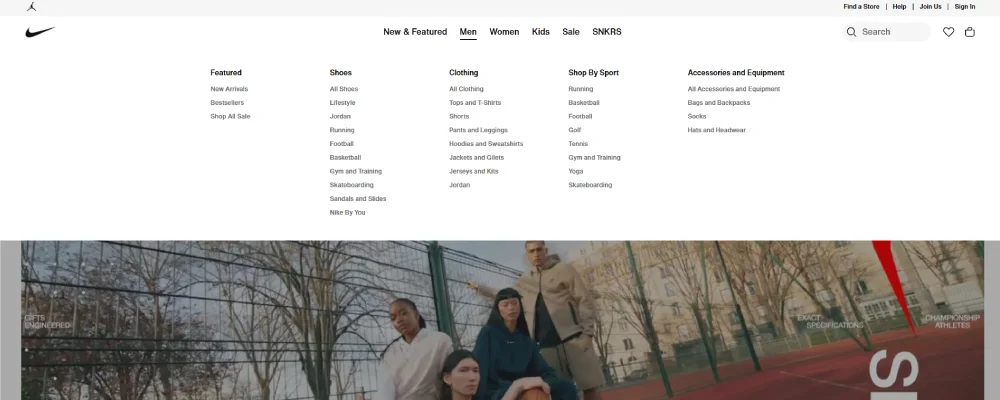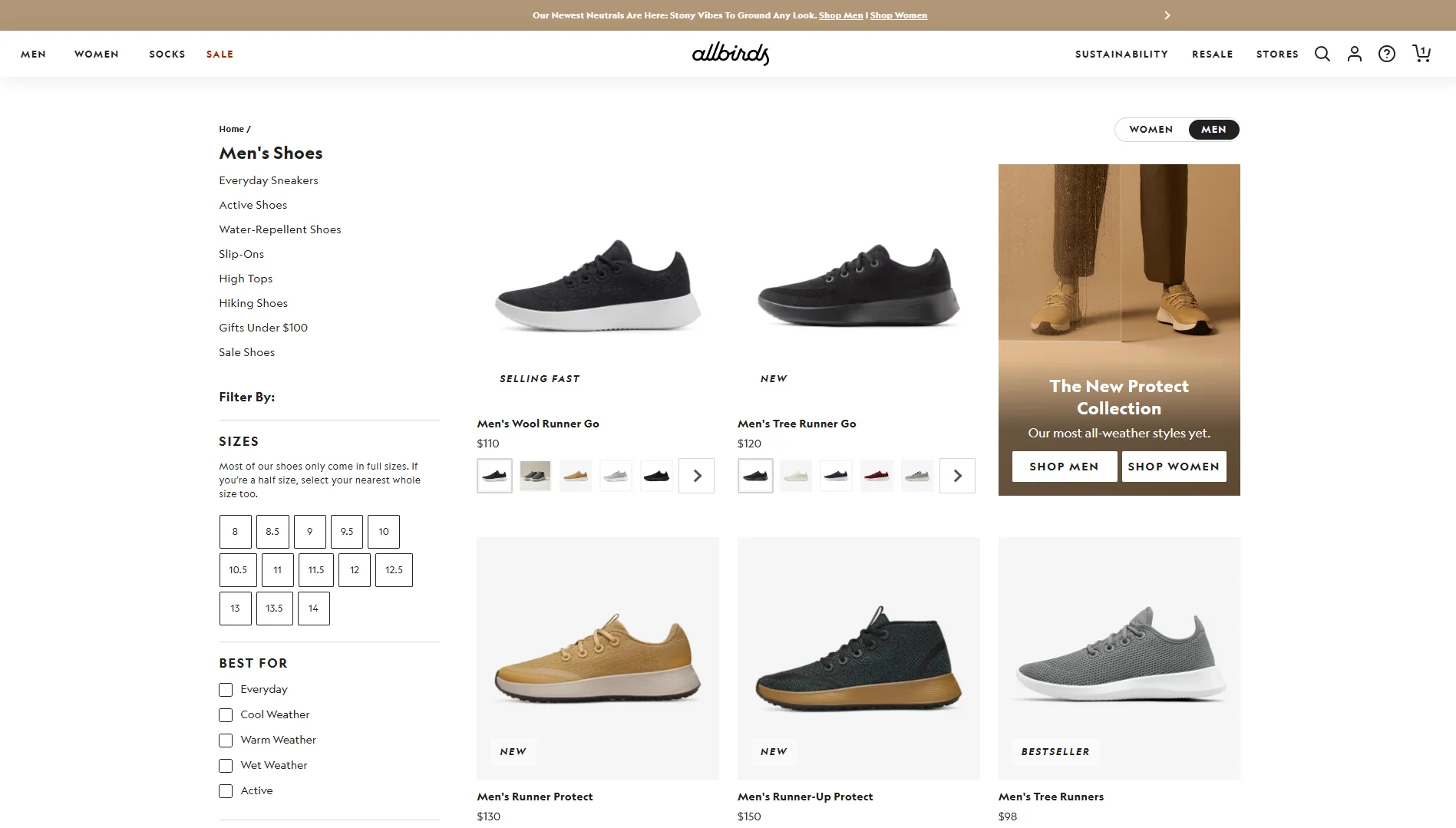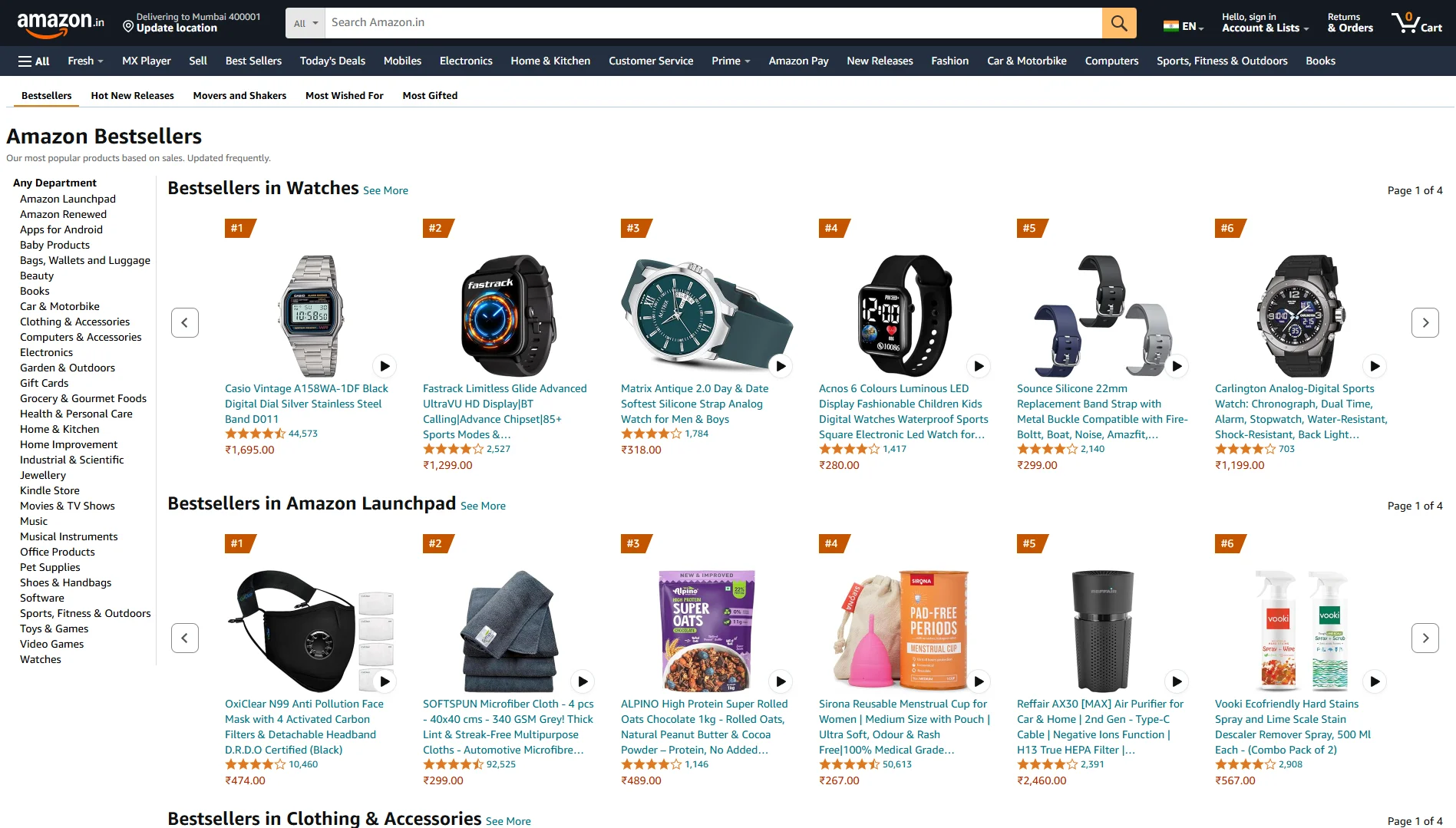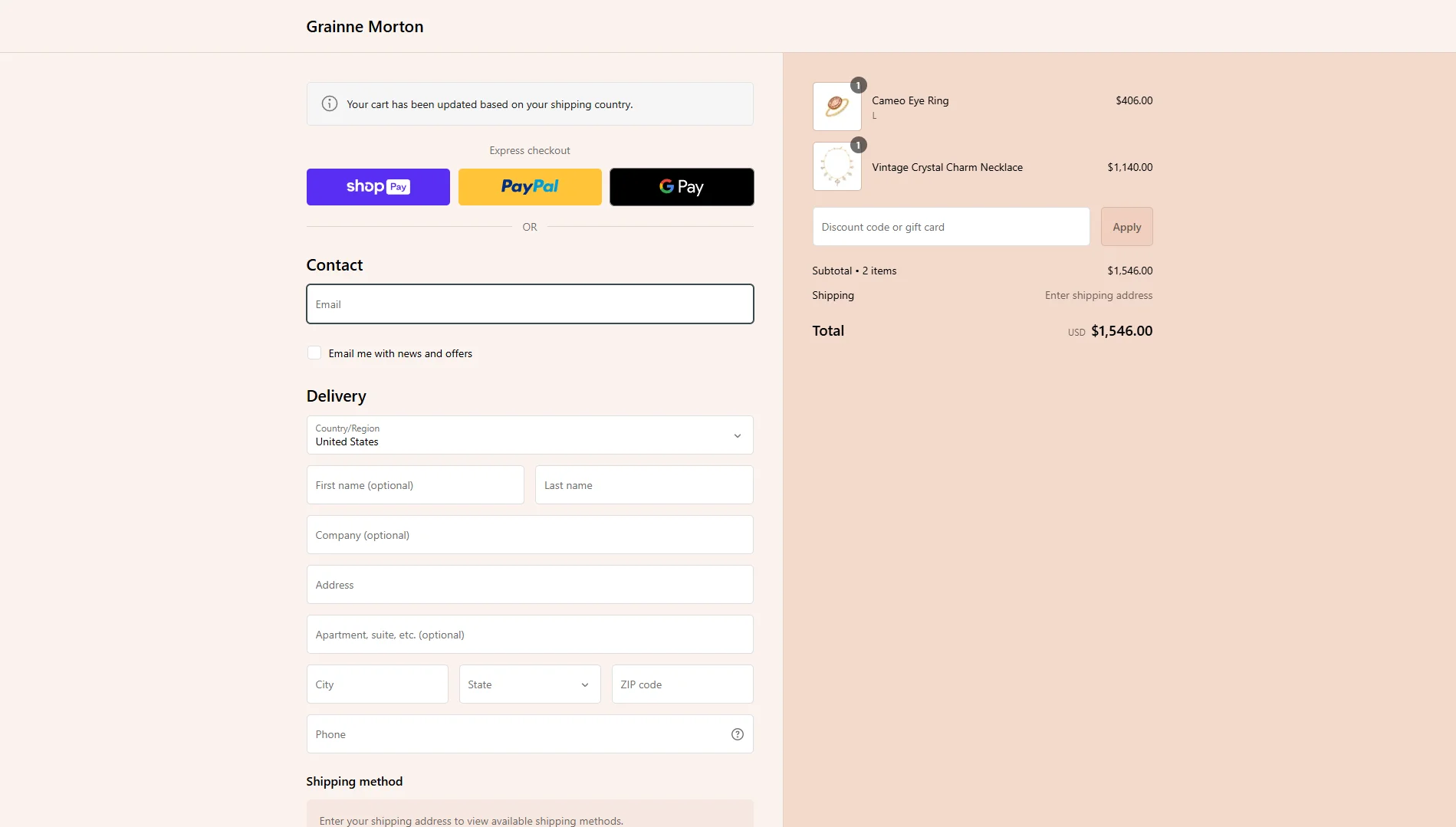Nowadays, eCommerce has become a competitive field – there are an estimated more than 20 million eCommerce websites worldwide!
That’s why it’s important to understand how to build top eCommerce customer experience, so you can develop long-term customer loyalty.
This article will discuss fundamental strategies to enhance your eCommerce customer experience, from pre-purcahase to post-purchase.
We’ll also show you how to measure your success, so you can identify areas for improvement.
Let’s dive in!
What is eCommerce Customer Experience?
eCommerce customer experience covers the entire journey a customer undergoes while interacting with an online store, including before, during, and after the purchase.
- Pre-purchase: It involves the initial stages of engagement, such as browsing the website and searching for products. In this phase, the focus is on guiding customers toward making informed decisions.
- During the purchase process: In this stage, customer experience is centered on the ease of transaction, including smooth checkout processes and secure payment options.
- Post-purchase: At this point, eCommerce customer experience extends to order fulfillment, delivery, and after-sales support.
Why is eCommerce Customer Experience Important?
Building a good eCommerce customer experience is crucial for several reasons:
- Customer retention: Positive experiences make customers feel satisfied, encouraging them to make repeat purchases and fostering loyalty.
- Competitive advantage: In a crowded marketplace, offering exceptional customer experiences sets businesses apart from competitors and attracts new customers.
- Brand reputation: Satisfied customers are more likely to share their experiences with others, leading to positive word-of-mouth marketing and improving brand reputation.
- Increased conversions: A seamless and enjoyable shopping experience reduces friction points and increases the likelihood of conversion, leading to higher sales and revenue.
- Reduced churn: Addressing customer needs and concerns effectively, businesses can minimize churn and retain more customers over time.
4 Ways to Build Top eCommerce Customer Pre-purchase Experience
Use these strategies to captivate people’s attention and lead them to be your customers.
#1. Have a Clear Navigation
Organize your navigation menu in a simple and intuitive way, with clear categories and subcategories that make it easy for customers to find what they’re looking for.
Besides using clear structure, you can make the categories or subcategories straightforward by coming up with descriptive and familiar labels for menu items and navigation links.
Avoid jargon or ambiguous terms that may confuse customers.
Also, keep your navigation menu concise by limiting the number of menu items to the most important and relevant categories.
Too many options can overwhelm customers and make navigation more challenging.
Nike is a perfect example of this method.
It only has six main menu items for a straightforward categorization, then uses a dropdown menu for more detailed options.
You can also use breadcrumbs navigation to show customers their current location within the website hierarchy and provide an easy way to navigate back to previous pages.
For instance, a furniture online store’s website breadcrumb can look like: “Home > Furniture > Living Room Furniture > Sofa & Sectional Collections”.
#2. Make Great Product Pages
Creating great product pages helps provide a seamless and enjoyable shopping experience, prompting customers to make a purchase.
Important elements on a good product page are:
- High-quality product images. Use high-resolution product images from multiple angles and provide zoom functionality for customers to examine details.
- Detailed product descriptions. Write informative and engaging product descriptions that highlight key features, benefits, specifications, and relevant information, such as materials and usage instructions.
- Clear pricing and promotions. Display clear pricing information, including any discounts or promotions. Use visual cues such as strikethrough pricing for discounted items to emphasize savings.
- Customer reviews and ratings. These reviews and ratings provide social proof and build trust with potential buyers, so allow customers to leave feedback and display them on the product pages.
- Call-to-Action (CTA) buttons. Prompt users to add the product to their cart or proceed to checkout using persuasive language such as “Add to Cart” or “Shop Now”.
- Product variants and options. If your product comes in different variants such as size, color, or style, provide dropdown menus or selection boxes for customers to choose their preferred options.
- Related products and cross-selling. Highlight complementary items that enhance the customer’s shopping experience.
You can take a look at Allbird’s product pages as an example.
The brand displays thorough product information, describing the features and materials, and includes close-up photos and videos to help potential customers visualize the product.
Below the product information, it showcases user reviews and ratings, along with the buyer’s purchase details like size and activity level to help users filter feedback according to their conditions.
#3. Design Personalized Recommendations
Personalization may make the web development process more complex and longer, but it’s worth the investment and effort.
Over 70% of consumers say they’re more likely to buy from brands that personalize.
eCommerce personalization could mean displaying a “Recommended For You” section that tailors to individual user preferences, browsing history, and purchase behavior.
Alternatively, showcase a “Trending Now” section that showcases currently popular products among other shoppers.
One real-life example of an eCommerce website that effectively applies personalized recommendations is Amazon.
For instance, when browsing a product page on Amazon, users often encounter the “Customers Who Bought This Item Also Bought” section.
This recommendation displays a list of products that other customers purchased alongside the item currently being viewed.
Users will also see top sellers in certain categories, displayed according to their search or purchasing history.
#4. Ensure You Have Great Mobile Experiences
More than 40% of consumers complete their entire purchase journey on mobile.
Therefore, ensure your eCommerce website or app is responsive to different screen sizes and resolutions.
You also need to optimize your website or app for speed as mobile users expect fast-loading pages to quickly access product information and complete transactions.
Some ways to speed up your loading time are:
- Minimizing file sizes
- Using browser caching
- Implementing techniques like lazy loading
You may have a stretched eCommerce website cost at the end, but prioritizing mobile optimization can attract the growing segment of mobile shoppers and drive conversions effectively.
3 Strategies to Improve eCommerce Customer Experience During the Checkout Process
Here’s how to ensure a good eCommerce customer experience during the checkout process:
1. Simplify the Checkout Process
Simplifying the checkout process is crucial for reducing friction and improving conversion rates in eCommerce.
Here are some tips to make the checkout process simpler:
- Offer a guest checkout option that allows users to complete their purchase without creating an account.
- Minimize the number of form fields to fill out to make the process quick and straightforward for users.
- Use progress indicators or a step-by-step checkout process to guide users through each stage and allow them to track their progress toward completion.
- Consider using a one-page checkout layout where all relevant information and steps are presented on a single page, so users don’t need to navigate through multiple pages.
Grainne Morton is a good example of this practice.
Its eCommerce website uses a single checkout with form fields only for the essentials: contact, delivery, and payment details.
2. Improve eCommerce Customer Support
Making customers wonder how to contact you or find important information will leave a negative impression.
Therefore, make the Contact page or live chat icon apparent on your footer or top menu items.
You can also implement a chatbot to provide instant assistance, so they can get important information without contacting live agents.
Consider offering customer support across various channels such as email, phone, live chat, and social media to provide convenience and accessibility to customers.
More importantly, ensure each channel is staffed with knowledgeable representatives who can address inquiries promptly and effectively.
3. Provide Free and Fast Shipping
Providing free and fast shipping is a great way to attract customers and improve their shopping experience, but it can be challenging to implement without incurring significant costs.
Follow these strategies to offer free and fast shipping without breaking the bank:
- Set minimum order thresholds. Encourage customers to spend more by setting a minimum order amount to qualify for free shipping.
- Negotiate shipping rates. Partner with shipping carriers to negotiate discounted rates based on your shipping volume.
- Diversify shipping partnerships. Work with multiple shipping carriers and logistics providers to make use of their competitive rates and service offerings.
- Offer expedited shipping as a paid option. Provide expedited shipping options for customers willing to pay extra for faster delivery.
- Consider flat-rate shipping. Flat-rate shipping options can offer predictability for customers while simplifying shipping cost calculations for your business.
3 Methods to Ensure Good Post-purchase eCommerce Customer Experience
1. Send Order Confirmation
Immediately send a clear and detailed order confirmation email or message to reassure customers that their order has been successfully received.
Include a detailed order summary in the confirmation message to help customers verify their order and ensure transparency in the transaction.
It should list:
- All purchased items
- Quantities
- Prices
- Any applicable discounts or promotions.
2. Provide Shipment Tracking
Provide tracking information so customers can monitor the status of their shipment in real time and know when to expect delivery.
This method is usually easier when you have an eCommerce app.
Still, consider the eCommerce app development cost, so that it won’t push beyond your budget.
As an alternative, you can provide a link to your delivery partner’s tracking system.
3. Send Personalized Follow-Up
Send personalized follow-up emails or messages after the order has been delivered to thank customers for their purchase.
You can also include one or some of the following:
- Loyalty rewards. Encourage repeat purchases and foster customer loyalty by offering rewards points, discounts, or exclusive offers.
- Hassle-free returns and exchanges. Provide clear instructions and a simple online returns portal. Offer free returns or exchanges whenever possible to encourage customer satisfaction.
- Product usage tips and resources. Provide helpful resources, such as user manuals, how-to guides, and video tutorials, to assist customers in getting the most out of their purchased products.
- Reviews and feedback. Encourage customers to leave reviews and feedback about their purchase experience, product quality, and overall satisfaction.
- Social media. Keep them engaged and informed about new products, offers, and company news by asking them to stay connected through newsletters or social media.
How to Measure eCommerce Customer Experience
Focusing only on conversion rates and sales as a measure of your eCommerce customer experience success can be tempting.
However, there are many other metrics and indicators to know customer satisfaction levels.
Here are some methods to show that you’re doing well in building top eCommerce customer experience:
- Net Promoter Score (NPS). Use NPS surveys to measure customer loyalty. They’ll be asked to rate their likelihood of recommending your brand on a scale of 0-10, categorizing them as promoters, passives, or detractors.
- Customer reviews and feedback. Monitor online reviews, comments, and social media mentions to understand customer sentiment and identify common issues or pain points.
- Website analytics. Use web analytics tools to track key metrics such as bounce rate, average session duration, conversion rate, and cart abandonment rate. These metrics provide insights into website usability and user behavior.
- Purchase funnel analysis. Analyze the conversion funnel to know drop-off points and optimize the user journey from initial engagement to purchase completion.
- Return and refund rates. Monitor return rates and reasons for returns to identify product quality issues or areas for improvement in the shopping experience.
Conclusion
Creating a top-notch eCommerce customer experience is essential for success in today’s competitive online marketplace.
Focusing on pre-purchase, during-purchase, and post-purchase touchpoints, businesses can make customers satisfied at every stage of their journey.
Note that every interaction contributes to overall satisfaction and loyalty, from having a clear navigation to simplifying the checkout process and sending personalized follow-ups after customers receive the product.
Also, remember to measure your eCommerce efforts every certain period to ensure you’re on track with your goals.
We hope this guide on how to build top eCommerce customer experience has helped you prepare your own online store.
If you need help, don’t hesitate to contact us and use our eCommerce development services.
Our experienced team has assisted 150+ clients in building their dream online store, and we think the next is yours!








